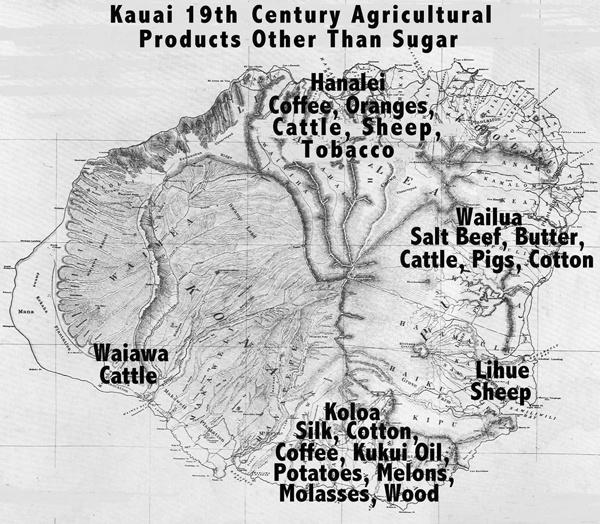Sugarcane, which was first cultivated commercially in Hawaii with success at Koloa beginning in 1835, and continued to be raised as such on the Garden Isle until Gay & Robinson ceased sugar production in 2009, was by far Kauai’s most
Sugarcane, which was first cultivated commercially in Hawaii with success at Koloa beginning in 1835, and continued to be raised as such on the Garden Isle until Gay & Robinson ceased sugar production in 2009, was by far Kauai’s most successful agricultural product.
Several agricultural commodities other than sugar were also produced commercially on Kauai during the 1800s.
At Koloa, starting in 1836, Sherman Peck and Charles Titcomb leased land upon which they planted thousands of mulberry trees to feed silkworms from which silk is made.
Their enterprise failed, however, in 1840, first when a drought hit Koloa and aphids subsequently covered the mulberry trees, and later, when a plague of spiders and strong Kona winds destroyed the surviving trees.
A small kukui nut oil factory was also started at Koloa in 1836 by D. H. Goodale that produced 50 gallons a day as a substitute for linseed oil, but paint manufacturers still preferred linseed oil and Goodale’s factory closed.
Coffee was grown successfully at Hanalei during the 1840s and 1850s until a blight caused by aphids wiped out over 100,000 coffee trees.
Wailua Ranch, owned by the German firm of Hoffschlaeger & Stepenhorst, made a profit in the 1850s by provisioning whalers with salted beef and butter, and with pigs and cattle that were not slaughtered until the whalers had reached their Arctic whaling grounds.
However, the cotton crop planted by Hoffschlaeger & Stepenhorst in Wailua Valley in 1860 was eventually abandoned when the warm, moist climate in the valley damaged cotton blossoms.
Sheep were raised at Waioli beginning in 1847, and in the 1860s, Lihue Plantation raised them, not for consumption, but to be turned out in the cane fields to keep down the weeds.
At Waiawa, just west of Kekaha, and in the vicinity thereabouts, Valdemar Knudsen raised cattle for many years during the mid- to late-1800s.


